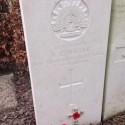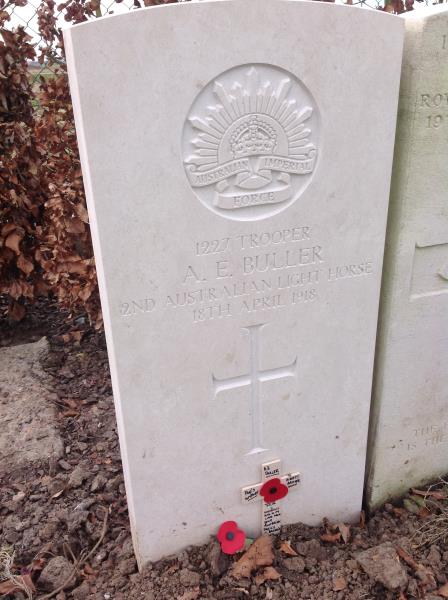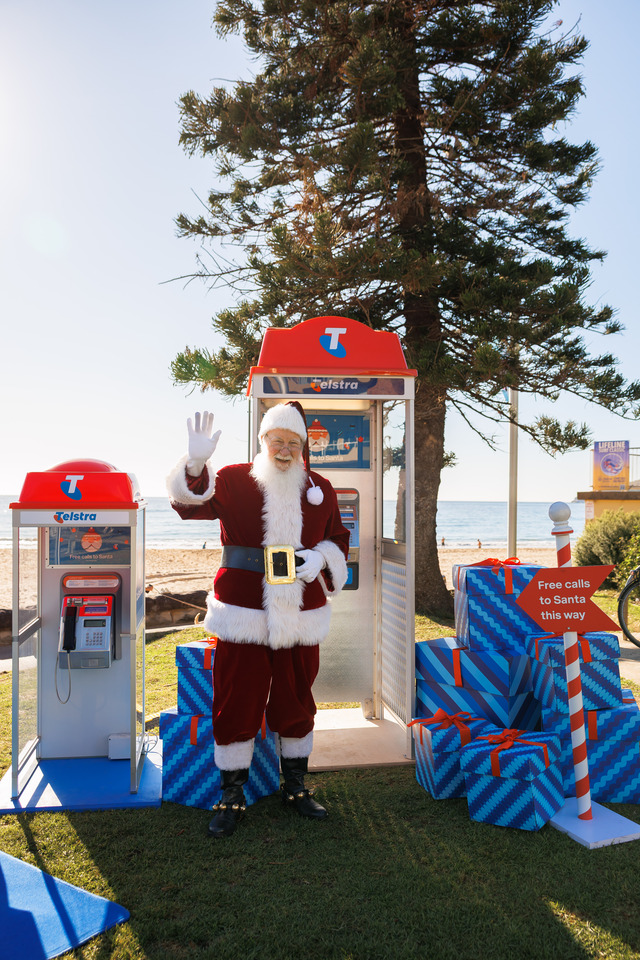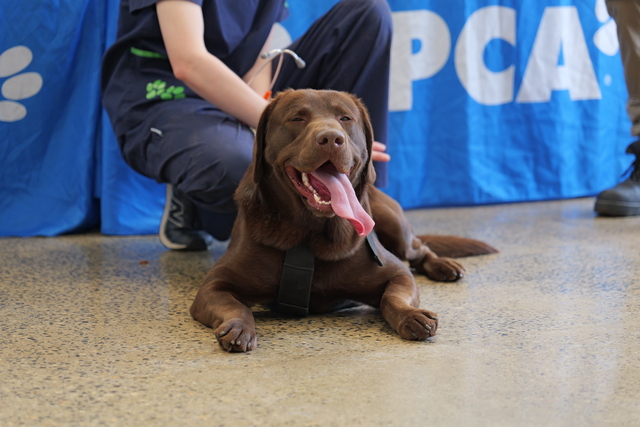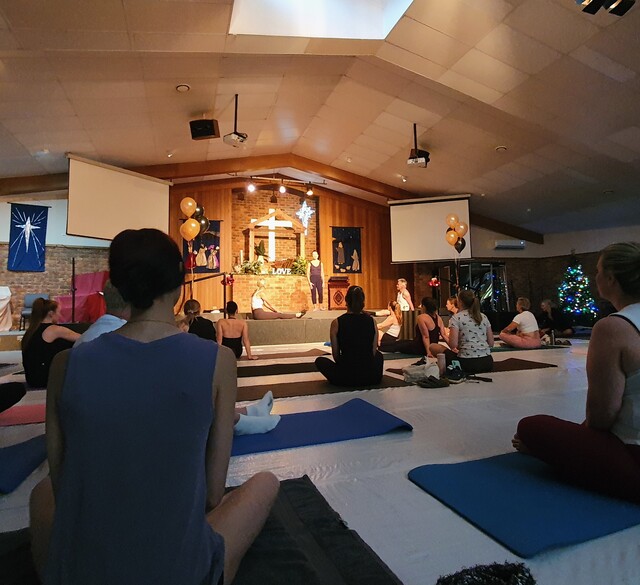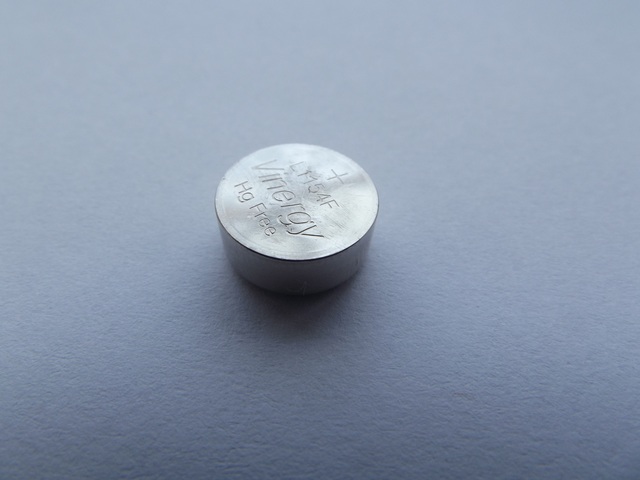By JOLLY READ
ALMOST 100 years ago, a 21-year-old Warburton man lay gravely wounded and fighting for his life on the other side of the world in a West Flanders field at Kemmel Hill.
There were others too. Bodies blasted and strewn like human detritus in the trenches and across the bomb-scarred landscape on 18 April, 1918. Signaller C.A. Sullivan witnessed Archibald Edward Buller hit by fragments from a German shell at 2 o’clock that afternoon and reported later that he was taken, still conscious, to a dressing station.
Sapper J.J. Lindsay, from the AIF’s B Squadron 22nd Corps, Mounted Regiment, helped carry him out to the first aid post.
His report of the events confirmed that Trooper Buller was “badly wounded by a shell in the shoulder and back. I helped carry him away to (the) first aid post and then he was taken to D/S (dressing station). He was alive when I left him. I knew him well. He was from Gippsland.”
Trooper Buller was evacuated with other men, some whole, some not, to the 62nd Casualty Clearing Station called Bandaghem at Haringhe in Belgium, where the young solider took his final breath as he succumbed to the ghastly wounds to his back, abdomen and buttock.
Kemmelberg, or Kemmel Hill, was at this time an important objective taken by the Germans in their Lys Offensive just 10 days after Trooper Buller died. He had been fighting in one phase of the Allied defence called the First Battle of Kemmel Ridge which lasted just two days from 17 to 19 April, 1918.
The young Archie, apparently called “Ted” among his D Troop, B Squadron mates, had returned to the front just three weeks earlier from a stint in hospital in England before he copped the shell fragment in the back.
Perhaps, in those last moments at the casualty station, if he was able and lucid enough, he may have willed his broken body across the thousands of nautical miles south east from where he lay, to recall a last vision in his mind’s eye of the verdant rolling hills of his family’s farming land in West Warburton, Victoria.
There, on his father’s farm and in the company of his younger brother Albert, he grew up on the backs of horses and learnt the rider’s skills that saw him assigned to the 4th Light Horse Regiment when he enlisted in July, 1915.
He embarked for Egypt from Melbourne on HMAT Hororata in September and the following year he was transferred to the 2nd Anzac Corps Mounted Regiment, arriving in March in Marseilles, France.
Two years later he was dead. They buried him, with a Christian service, in a small military cemetery just across the French border in a flat Flanders field that stretched out into the distance over an area defined during the war as the Ypres Salient. He was only one of two Australians buried there among the other 770 Allied soldiers’ graves.
His final resting place was a far cry from where he had spent 18 years growing up surrounded by the peaceful high country on the upper reaches of the Yarra River, bounded by lush, tall forests of mountain ash.
Not far from his grave, a cousin, Private Charles Buller, of the 57th Australian Infantry Battalion was killed six months earlier from shell wounds to the head and buried, along with eventually nearly 11,000 others, at Lijssenthoek Military Cemetery.
Charles’ only other two brothers, Sergeant Arthur Buller and Private John Buller also were killed.
Arthur died from head wounds in May 1917 and was buried in France at Grevillers British Cemetery while John, according to a comrade dug out alive, was buried in a trench after a high explosive shell hit them in August 1916, killing four others as well. His body was never recovered and his name is included at the Villers-Bretonneux Memorial in France.
The four Buller boys were all from West Warburton, and early white settler stock. Their grandfather arrived in Melbourne from London in 1858 and moved to the district in 1863. He built the first school and ran a local hotel and general store that was also a Cobb and Co coach station.
When he died at 67 years of age, he was the president of the Upper Yarra Shire Council and the local newspaper recorded that “Mr Buller was a man of the stamp that builds nations and countries and districts and such a man Warburton can ill afford to lose…”
When Archibald died just six months prior to war’s end, his brother, Albert, was 19. “Bert” moved to Western Australia where he took his new bride to what was then the outskirts of wheat and sheep country to establish a farm at Bruce Rock that today is still run by his grandson.
He exchanged valley life for a large acreage of sun-bleached land dotted with mallee and scrubby, granite outcrops. He apparently rarely spoke of his dead brother or cousins, and perhaps that is why he left Victoria to start a new life in the West far from his boyhood memories.
When his first child, a boy, was born in 1925, he named him Archibald in remembrance.
His brother and his three cousins were among the more than 60,000 Australians killed from the 416,809 who enlisted, including more than 1000 Indigenous Australians, and they were, like their grandfather, men “of the stamp that builds nations and countries and districts”.
Lest we forget.

